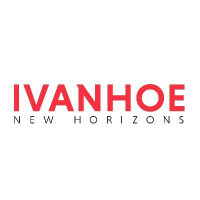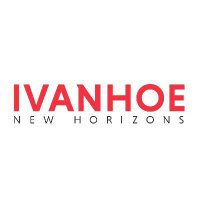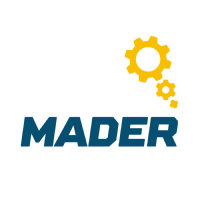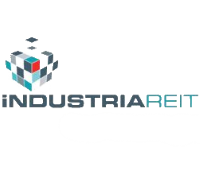
Ivanhoe Mines Ltd
TSX:IVN


| US |

|
Johnson & Johnson
NYSE:JNJ
|
Pharmaceuticals
|
| US |

|
Berkshire Hathaway Inc
NYSE:BRK.A
|
Financial Services
|
| US |

|
Bank of America Corp
NYSE:BAC
|
Banking
|
| US |

|
Mastercard Inc
NYSE:MA
|
Technology
|
| US |

|
UnitedHealth Group Inc
NYSE:UNH
|
Health Care
|
| US |

|
Exxon Mobil Corp
NYSE:XOM
|
Energy
|
| US |

|
Pfizer Inc
NYSE:PFE
|
Pharmaceuticals
|
| US |

|
Palantir Technologies Inc
NYSE:PLTR
|
Technology
|
| US |

|
Nike Inc
NYSE:NKE
|
Textiles, Apparel & Luxury Goods
|
| US |

|
Visa Inc
NYSE:V
|
Technology
|
| CN |

|
Alibaba Group Holding Ltd
NYSE:BABA
|
Retail
|
| US |

|
JPMorgan Chase & Co
NYSE:JPM
|
Banking
|
| US |

|
Coca-Cola Co
NYSE:KO
|
Beverages
|
| US |

|
Walmart Inc
NYSE:WMT
|
Retail
|
| US |

|
Verizon Communications Inc
NYSE:VZ
|
Telecommunication
|
| US |

|
Chevron Corp
NYSE:CVX
|
Energy
|
Utilize notes to systematically review your investment decisions. By reflecting on past outcomes, you can discern effective strategies and identify those that underperformed. This continuous feedback loop enables you to adapt and refine your approach, optimizing for future success.
Each note serves as a learning point, offering insights into your decision-making processes. Over time, you'll accumulate a personalized database of knowledge, enhancing your ability to make informed decisions quickly and effectively.
With a comprehensive record of your investment history at your fingertips, you can compare current opportunities against past experiences. This not only bolsters your confidence but also ensures that each decision is grounded in a well-documented rationale.
Do you really want to delete this note?
This action cannot be undone.

| 52 Week Range |
9.88
17.77
|
| Price Target |
|
We'll email you a reminder when the closing price reaches CAD.
Choose the stock you wish to monitor with a price alert.

|
Johnson & Johnson
NYSE:JNJ
|
US |

|
Berkshire Hathaway Inc
NYSE:BRK.A
|
US |

|
Bank of America Corp
NYSE:BAC
|
US |

|
Mastercard Inc
NYSE:MA
|
US |

|
UnitedHealth Group Inc
NYSE:UNH
|
US |

|
Exxon Mobil Corp
NYSE:XOM
|
US |

|
Pfizer Inc
NYSE:PFE
|
US |

|
Palantir Technologies Inc
NYSE:PLTR
|
US |

|
Nike Inc
NYSE:NKE
|
US |

|
Visa Inc
NYSE:V
|
US |

|
Alibaba Group Holding Ltd
NYSE:BABA
|
CN |

|
JPMorgan Chase & Co
NYSE:JPM
|
US |

|
Coca-Cola Co
NYSE:KO
|
US |

|
Walmart Inc
NYSE:WMT
|
US |

|
Verizon Communications Inc
NYSE:VZ
|
US |

|
Chevron Corp
NYSE:CVX
|
US |
This alert will be permanently deleted.
Ivanhoe Mines Ltd
Ivanhoe Mines Ltd., a dynamic player in the global mining landscape, is predominantly known for its strategic focus on developing and exploring mineral properties in Africa. The company's flagship asset, the Kamoa-Kakula Project in the Democratic Republic of Congo (DRC), has swiftly garnered attention as one of the most significant copper discoveries in recent decades. This massive project is co-owned with the Congolese government and Chinese mining company Zijin Mining Group, creating a formidable alliance that promises not only substantial copper output but also a sustainable development model. The mine's proximity to critical infrastructure, such as hydroelectric power facilities, underscores its operational efficiency and potential for environmentally conscious mining practices.
In addition to its copper interests, Ivanhoe Mines also holds substantial stakes in two other major mining ventures: the Platreef Project in South Africa, focusing on platinum-group metals, and the Kipushi Project in the DRC, renowned for its exceptional zinc deposits. Ivanhoe’s diversified portfolio strategically positions the company to benefit from various metals, each serving essential roles in the global economy—from electronics to automotive manufacturing. The company's revenue model hinges on producing and selling these valuable resources on the global market, complemented by strategic partnerships that enhance capital and operational capacity. By steadily advancing these high-quality resource projects, Ivanhoe Mines not only crafts a tale of growth and resilience but also contributes significantly to regional economic development where its operations are based.

Ivanhoe Mines Ltd., a dynamic player in the global mining landscape, is predominantly known for its strategic focus on developing and exploring mineral properties in Africa. The company's flagship asset, the Kamoa-Kakula Project in the Democratic Republic of Congo (DRC), has swiftly garnered attention as one of the most significant copper discoveries in recent decades. This massive project is co-owned with the Congolese government and Chinese mining company Zijin Mining Group, creating a formidable alliance that promises not only substantial copper output but also a sustainable development model. The mine's proximity to critical infrastructure, such as hydroelectric power facilities, underscores its operational efficiency and potential for environmentally conscious mining practices.
In addition to its copper interests, Ivanhoe Mines also holds substantial stakes in two other major mining ventures: the Platreef Project in South Africa, focusing on platinum-group metals, and the Kipushi Project in the DRC, renowned for its exceptional zinc deposits. Ivanhoe’s diversified portfolio strategically positions the company to benefit from various metals, each serving essential roles in the global economy—from electronics to automotive manufacturing. The company's revenue model hinges on producing and selling these valuable resources on the global market, complemented by strategic partnerships that enhance capital and operational capacity. By steadily advancing these high-quality resource projects, Ivanhoe Mines not only crafts a tale of growth and resilience but also contributes significantly to regional economic development where its operations are based.
Q3 Results: Ivanhoe Mines reported Kamoa-Kakula revenue of $566 million and adjusted EBITDA of $87 million, both down due to lower copper sales and grades, but still within expectations.
Turnaround Progress: Management confirmed that Q3 marked the low point for Kamoa-Kakula, with mine dewatering and rehabilitation proceeding well and higher grades expected to resume soon.
Platreef Milestone: First ore was fed to the Platreef concentrator, with first concentrate expected within a week, marking a major step forward for the project.
Kipushi Ramp-Up: Kipushi hit record zinc production and revenue, and the debottlenecking program was completed ahead of schedule, setting up for even stronger Q4 results.
QIA Investment: Qatar Investment Authority completed a $500 million equity investment, bolstering Ivanhoe’s cash position to over $1 billion.
Smelter Nearing Start: The Kamoa-Kakula smelter will be heated up in November and start producing copper anode in December, expected to reduce cash costs and logistics expenses.
Guidance & Outlook: 2025 CapEx guidance for Kamoa-Kakula was lowered and shifted to 2026; updated life-of-mine plans and new production guidance for 2026–2027 will be published by early January.




































